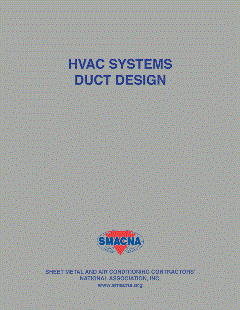MANY YEARS AGO, I paid good money out of my own pocket to learn how to design a duct system. I won’t say to whom I paid this money, because I got ripped off. What I “learned” was how to find .1 on a ductulator. You may have had a similar experience. And for the duration of this article, where I use .1, you can insert your magic number (.08, .06, this one on supply and that one on return, whatever…) instead.
That’s not duct design. And if you aren’t changing the blower characteristics at the end it’s not even blower design. It’s just half-ass design.
A duct doesn’t hold a fixed amount of air. Duh. Imagine a single duct connected to a system. Use a higher or lower speed on your blower and you change the amount of air through it. Have a homeowner put in their own filter and you’ll get so little airflow out of that duct that the coil will freeze faster than you can say “but they guy at the big-box store said this was the best one!” You know this. It’s not news.
So why are we taught to use a .1 friction rate? Because it works? Nope. Well… sort of. It works ONLY IF you can pick and choose your blower characteristics after you use it. And they never teach that part.
Let’s break this down:
- .1 is a friction rate. It tells you the energy lost moving through the duct. What does that mean? Well, let’s look at it this way:
- The blower is trying to move the air: we’ll call that FORCE for simplicity’s sake.
Everything else is causing friction or getting in the way: we’ll call that RESISTANCE.
When you use .1 on the ductulator you can measure friction or RESISTANCE. If you know how much duct there is, you can know how much RESISTANCE you’ve created. But duct isn’t the only thing that creates RESISTANCE. So then you can look up all of the other RESISTANCE numbers for everything else air has to go through (coils, filters, fittings, etc.). Once you do that, you can take all of those RESISTANCE numbers and add them up. Now you know just how much total RESISTANCE the blower is working against.
Now all you have to do is configure the blower to have enough FORCE to overcome this. You might change speeds, or pulleys, or motors or whatever you need to overcome that RESISTANCE with the right airflow.
See? BLOWER design. And in commercial work, that works pretty well. But when was the last time you saw a new residential install involve adjusting pulleys or changing blower motors? Right. Which is why you’re supposed to do DUCT design.
What if you started with how much FORCE your blower had? Then you subtracted all of the RESISTANCES you can’t do much about (filter, coil, etc.)?
You would be left with the amount of FORCE the blower had left over to deal with the RESISTANCE the duct system will create.
Then- now hear me out- what if you then changed your friction rate accordingly, designing the duct to make sure the blower would do its job correctly? Using lower RESISTANCE friction rates (and bigger ducts) when there isn’t as much FORCE left over, and higher RESISTANCE friction rates (and smaller ducts) when there’s more FORCE. Well that would be DUCT design and it’s just crazy enough to work.
By the way, there’s a name for this crazy duct design method. It’s called ACCA’s Manual D. And I might know a guy who could get you some software to do this stuff for you.










